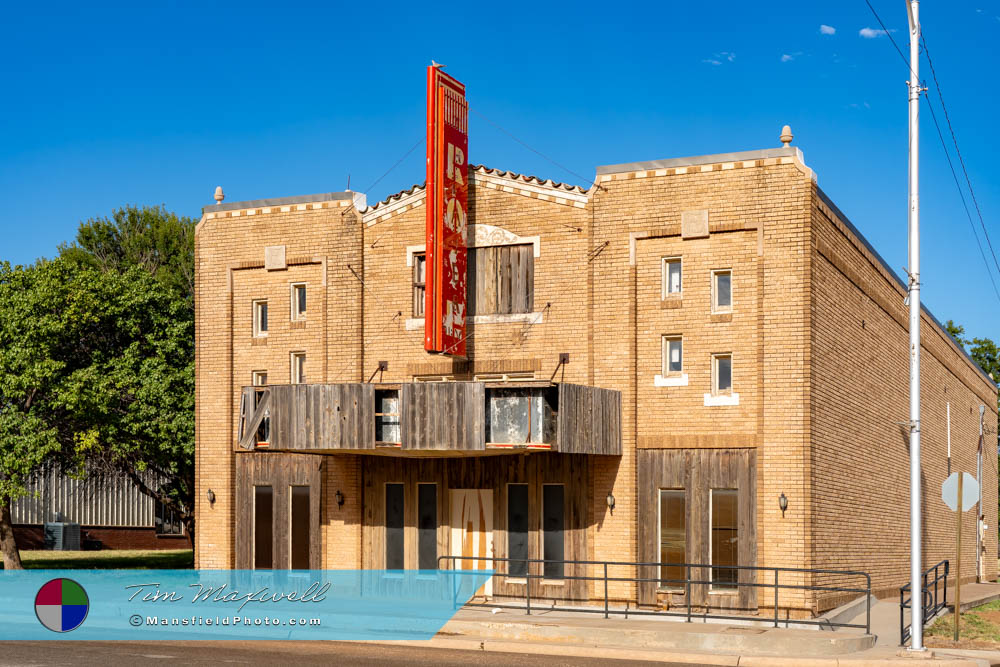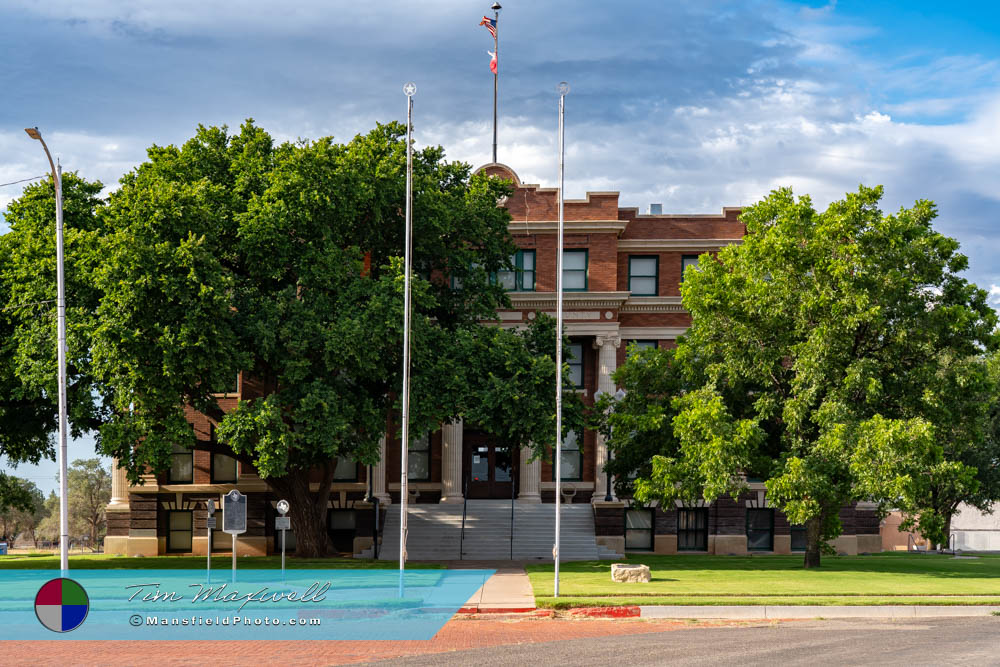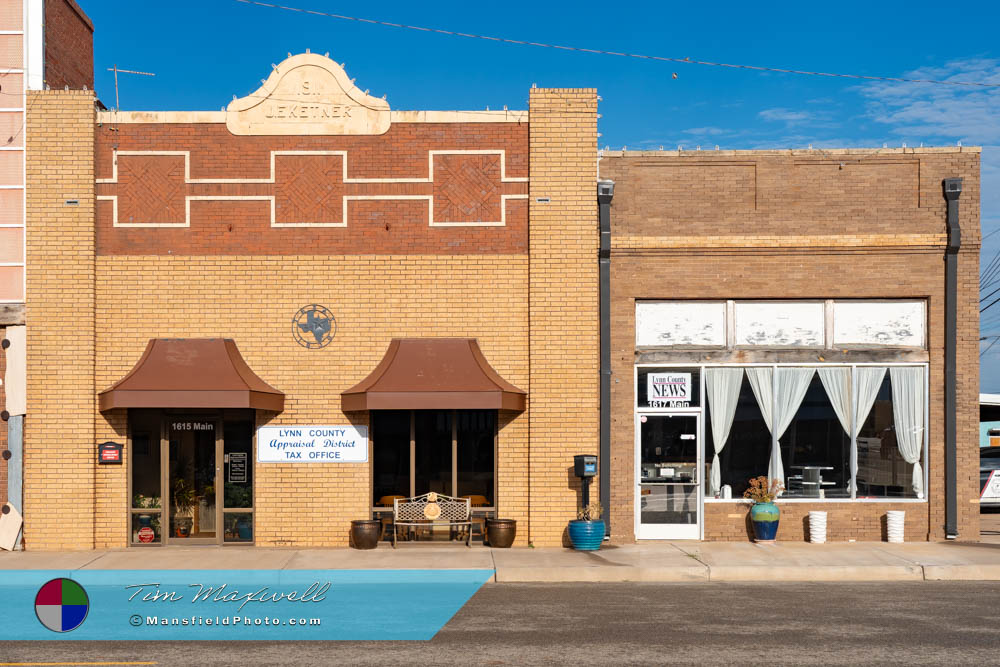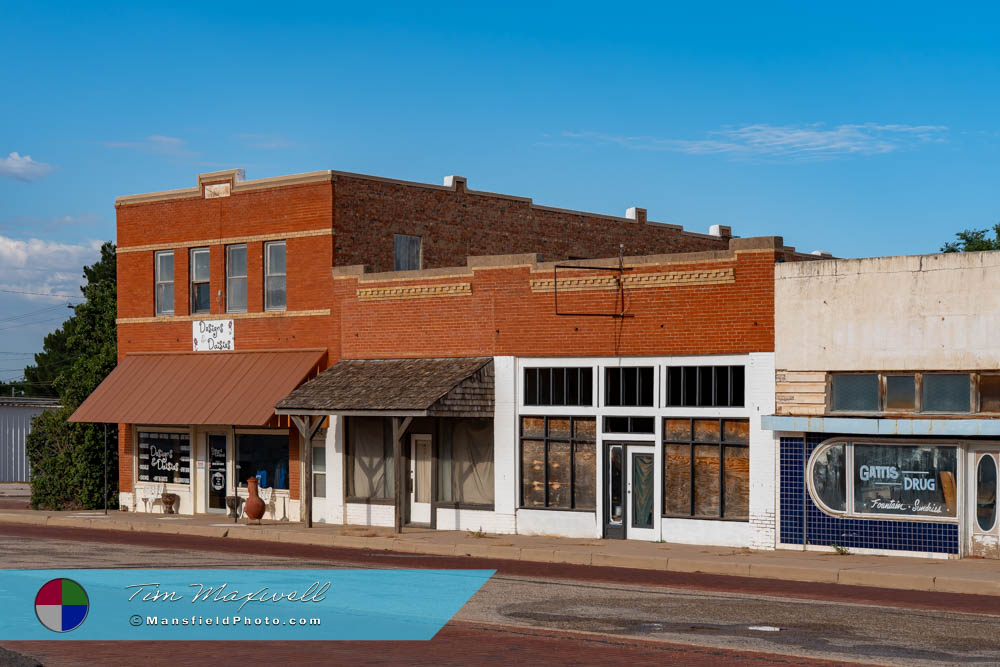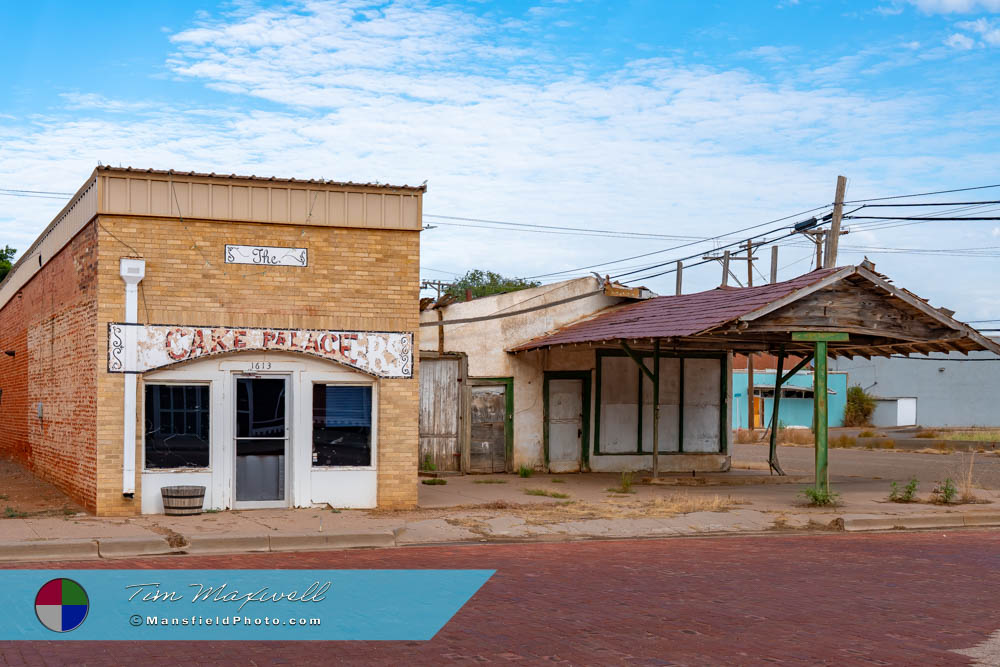– Mansfield Photography –
Tahoka, Texas
– From Bonfire Beginnings to County Seat.
Tahoka, Texas has a story that starts in the flickering glow of a winter bonfire and grows into a tale of cattle ranches, cotton fields, and a beautiful courthouse that still stands proudly today. This small town in Lynn County, while quiet, carries a history and character that’s hard to overlook, even if much of its downtown hums at a slower pace.
The Birth of a Town and Its Name
In December 1902, over 100 people gathered around a bonfire near a ravine southwest of Tahoka Lake. Their purpose was to vote on a petition for county organization and select a site for the county seat. They chose the name “Tahoka,” derived from an Indian word meaning “fresh water,” a fitting tribute to the nearby lake and springs that had been a vital source for travelers, Native peoples, and cattle herds for centuries.
By early 1903, three men—B.G. Sweet, Jack Alley, and W.T. “Bill” Petty—formed the Tahoka Townsite Company. Sweet surveyed and platted the land, and alongside L.E. King, opened the first mercantile store on the southwest corner of the public square. The Tahoka Post Office opened on April 30, 1903, with Fannie N. Henderson as its first postmaster. Within months, the town had a two-story courthouse, a school, two churches, a hotel, several businesses, and its own newspaper, The Lynn County News, first published in October of that year.
Cattle, Cotton, and the T-Bar Ranch
The area’s early growth was closely tied to the cattle industry. In 1883, Cass Edwards founded the T-Bar Ranch in Crosby County, later relocating it to Double Lakes in Lynn County. By the late 1880s, he formed the Tahoka Cattle Company with partners W.C. Young, Jasper Hayes, and L.S. Gholson. The T-Bar grew to around 87,000 acres, becoming one of the largest ranches in the South Plains.
By the turn of the 20th century, however, farming began to replace open-range ranching as settlers moved into Lynn County. The T-Bar Ranch managed to hold on longer than most, but even it lost thousands of acres of grazing land by 1910. Cotton quickly became the area’s dominant crop—a role it still plays today, with cotton farms and gins dotting the countryside.
The Railroad and Incorporation
The arrival of the Santa Fe Railroad in 1910 connected the town to wider markets. For a time, Tahoka became one of the largest cattle shipping points in the nation. The town officially incorporated on June 13, 1915, with J.E. Stokes as its first mayor. The blend of agriculture, ranching, and improved transportation helped the community thrive in the first half of the 20th century.
The Lynn County Courthouse
One of the town’s most striking features is the Lynn County Courthouse, completed in December 1916. When Lynn County was created in 1876, it remained unorganized until April 1903, with Tahoka designated as the county seat. The first courthouse was a modest two-story frame building. By 1915, citizens voted to fund a new, more permanent structure.
Designed by William M. Rice and built by A.Z. Rogers, the courthouse is a three-story Classical Revival building with a full basement. It features symmetrical facades, Ionic-column porticos, and a red brick exterior with cast stone veneer. It was designed to house courtrooms, offices, and even the county jail. Over a century later, it still stands as an architectural centerpiece of the downtown square.
Downtown Today
Modern downtown Tahoka tells a quiet but appealing story. About half of its buildings are in active use, while the other half are closed.
Yet unlike in many rural towns, the unused buildings here remain in remarkably good condition. The result is a downtown that’s visually appealing—orderly brick facades, preserved storefronts, and the courthouse anchoring the square—making it a lovely place for a slow walk on a sunny afternoon.
The Tahoka Daisy
One of the most charming details about the town is its namesake flower, the Tahoka Daisy. Originally classified in 1832 by German botanist Carl Sigismund Kunth as the prairie aster, it is a hardy wildflower known for its lavender-blue petals, golden center, and fern-like foliage. It thrives in sandy or gravelly soil and blooms from May to September. This little flower adds a dash of color to the area’s open landscapes and serves as a local emblem.
Lynn County’s Deep Roots
Lynn County’s history stretches far beyond the founding of Tahoka. The land was once home to nomadic Native tribes and was visited by Spaniards as early as the 1500s. In the 1860s, New Mexicans grazed large sheep herds here, and by the late 19th century, it was the scene of the last great buffalo hunts and U.S. Cavalry campaigns against the Comanche. The last known cowboy–Indian skirmish in the region took place at Double Lakes in 1879.
By the early 1900s, ranching and cotton farming defined the economy. Schools opened in 1902, and when the county organized the next year, Tahoka was chosen as its hub of government and commerce. Over the decades, the town weathered shifts in agriculture and transportation but maintained its role as the county’s center.
Tahoka in the Present Day
Today, Tahoka is a small but important agricultural community, consistently ranking among the top cotton-producing counties in Texas and even in the nation. While it no longer has the bustle it once did when the railroad and cattle drives filled the streets with activity, the town offers a sense of stability, history, and pride.
Its courthouse square, dotted with preserved buildings and anchored by the stately 1916 courthouse, stands as a reminder of what can endure in rural Texas. The surrounding fields still produce the crops that have been part of life here for over a century. And every spring and summer, the Tahoka Daisy blooms—just as it has for generations—quietly marking the passing of time in this small but storied community.
📸 Interested in More Photos of This Town?

